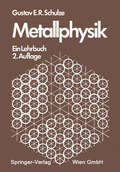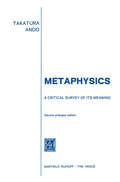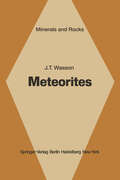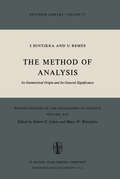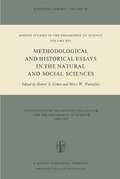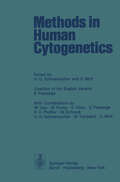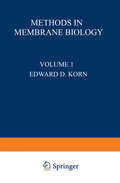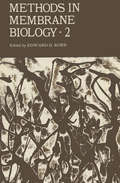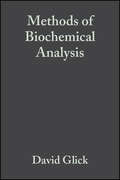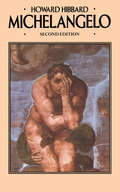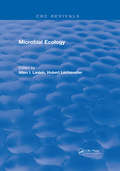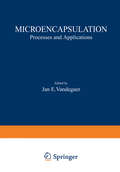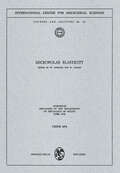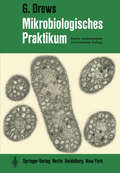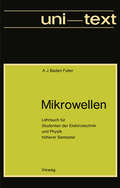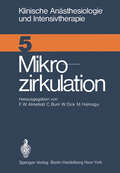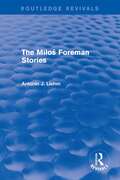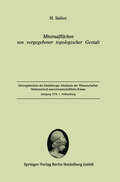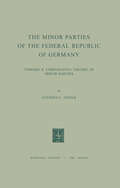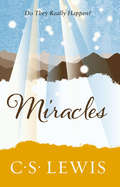- Table View
- List View
Metaphysics: A Critical Survey of its Meaning
by T. AndoIn the summer of 1960 I visited Oxford and stayed there several months. This book was written as some slight memorial of my days in that ancient seat of learning. It is my pleasant duty to acknowledge the great debt I own to Mr. D. Lyness in the task of putting it into English. In addition I remember with gratitude Dr. J. L. Ackrill of Brasenose College, who gave me unfailing encouragement, and also Dr. R. A. Rees of Jesus College, who read my manuscript through and subjected it to a minute revision. Lastly for permission to quote from Sir W. D. Ross' translation of Aristotle's Metaphysics, I have to thank the editors of Oxford University Press. Kyoto, Japan T.A. 61 Sep.19 . To answer the readers' complaints that the first edition did not ex plain the author's attitude towards metaphysics, one more chapter on new positivism was written in 1966, but the publication was delayed till the second edition. Special thanks are due to Mr. E. B. Brooks for his assistance in writing English, to Prof. Philip P. Wiener, and to Dr. R. A. Rees, both for some kind services. T. A. Okayama 1973 CONTENTS INTRODUCTION I I. THE ORIGIN OF THE CONCEPT OF METAPHYSICS I. Reimer's Theory 3 2. Aristotle's Metaphysics 6 II. THE TRADITION OF THE CONCEPT OF METAPHYSICS Ancient Interpretations 1.
Meteorites: Classification and Properties (Minerals, Rocks and Mountains #10)
by J. T. WassonMy goal in writing this book was to provide an introduction to meteorite science and a handbook on meteorite classification. Insofar as I succeeded it should prove useful both to the practicing professional and to university students at the upper-division and graduate levels. I originally intended the book to be nearly twice as long. The second half was to be a review of properties relating to the origin of each group of meteorites. Chapter XVIII is an example of how these later chapters would have looked, although most would not have been as interpretative. These chapters would have been useful chiefly to meteorite researchers looking for a quick summary of group properties; they were not written because of lack of time. Perhaps I will start to prepare this "second volume" in a year or so when my family and I have recovered from the preparation of the present volume. Although some parts of the classification portion are mildly icono clastic, I have attempted either to avoid the inclusion of speculative interpretations or to flag them with a caveat to the reader. I have relaxed these principles somewhat in Chapter XVIII to conserve space, but even there the discussion of alternative speculations should give the reader a feeling for the degree of uncertainty attached.
The Method of Analysis: Its Geometrical Origin and Its General Significance (Boston Studies in the Philosophy and History of Science #25)
by Jaakko Hintikka U. RemesAs official sponsors of the First International Conference in the History and Philosophy of Science, the two Divisions of the International Union of the History and Philosophy of Science owe a great deal to the University of Jyvliskyla and the 1973 Jyvliskylli Summer Festival for the extra ordinarily generous hospitality they provided. But there is an additional debt owed, not simply for the locale but for the very substance of the Conference, to the two Finnish scholars who have jointly authored the present volume. For this volume represents not only the first part of the published proceedings of this First International Conference in the History and Philosophy of Science, but also, most fittingly, the paper that opened the Conference itself. Yet the appropriateness of the paper from which this book has resulted opening the Conference lies far less in the fact that it was a contribution by two Finnish authors to a meeting hosted in Finland than it does to the fact that this paper, and now the present book, comes to grips in an extreme ly direct way with the very problem the whole Conference was from the outset designed to treat. Generally put, this problem was to bring to gether a number of historians and philosophers of science whose contrib uted papers would bear witness to the ways in which the two disciplines can be, and are, of value to each other.
Methodological and Historical Essays in the Natural and Social Sciences (Boston Studies in the Philosophy and History of Science #14)
by Robert S. Cohen Marx W. WartofskyModem philosophy of science has turned out to be a Pandora's box. Once opened, the puzzling monsters appeared: not only was the neat structure of classical physics radically changed, but a variety of broader questions were let loose, bearing on the nature of scientific inquiry and of human knowledge in general. Philosophy of science could not help becoming epistemological and historical, and could no longer avoid metaphysical questions, even when these were posed in disguise. Once the identification of scientific methodology with that of physics had been queried, not only did biology and psychology come under scrutiny as major modes of scientific inquiry, but so too did history and the social sciences - particularly economics, sociology and anthropology. And now, new 'monsters' are emerging - for example, medicine and political science as disciplined inquiries. This raises anew a much older question, namely whether the conception of science is to be distinguished from a wider conception of learning and inquiry? Or is science to be more deeply understood as the most adequate form of learning and inquiry, whose methods reach every domain of rational thought? Is modern science matured reason, or is it simply one historically adapted and limited species of western reason? In our colloquia at Boston University, over the past fourteen years, we have been probing and testing the scope of philosophy of science.
Methods in Human Cytogenetics
by E. Passarge W. Gey W. Krone S. Ohno R. A. Pfeiffer W. Schnedl H. G. Schwarzacher M. Tolksdorf U. WolfThis volume was originally intended to be an English translation of the book MetllOden in der medizinischen Cytogenetik, published in 1970. Just about then, however, a number of new techniques were introduced in human cytogenetics and soon acquired the utmost importance, parti cularly in clinical diagnosis, so that the English edition had to be con siderably enlarged. As a result, there are now twelve chapters instead of eight, and two additional authors have been called upon, Dr. KRONE and Dr. SCHNEDL. In addition to the up-to-date presentation of con ventional methods of cell culture and techniques for the preparation and identification of human chromosomes, this text covers the various tech niques of producing banding patterns and applying them in chromo some identification. Further, it deals with the culture of amniotic fluid cells and gives instructions for handling tissue-culture cells for bio chemical analysis; it thus meets the ever-increasing requirements of a modern cell-culture laboratory. To paraphrase the aims of this book, we quote part of the preface to the German edition: "It was intended to collect the various methods so as to make them accessible for laboratory use. Furthermore, it is hoped that the reader faced with current research problems will be stimulated to modify and supplement the techniques described, instead of merely applying them automatically. In a rapidly developing field, some methods are still preliminary, and no final presentation seems possible.
Methods in Membrane Biology: Volume 1
by Edward D. KornExamination of the tables of contents of journals - biochemical, molecular biological, ultrastructural, and physiological-provides convincing evidence that membrane biology will be in the 1970s what biochemical genetics was in the 1960s. And for good reason. If genetics is the mechanism for main taining and transmitting the essentials of life, membranes are in many ways the essence of life. The minimal requirement for independent existence is the individualism provided by the separation of "life" from the environment. The cell exists by virtue of its surface membran~. One might define the first living organism as that stage of evolution where macromolecular catalysts or self-reproducing polymers were first segregated from the surrounding milieu by a membrane. Whether that early membrane resembled present cell membranes is irrelevant. What matters is that a membrane would have provided a mechanism for maintaining a local concentration of molecules, facilitating chemical evolution and allowing it to evolve into biochemical evolution. That or yet more primitive membranes, such as a hydrocarbon monolayer at an air-water interface, could also have provided a surface that would facilitate the aggregation and specific orientation of molecules and catalyze their interactions. If primitive membranes were much more than mere passive barriers to free diffusion, how much more is this true of the membranes of contemporary forms of life. A major revolution in biological thought has been the recogni tion that the cell, and especially the eukaryotic cell, is a bewildering maze of membranes and membranous organelles.
Methods in Membrane Biology: Volume 2
by Edward D. KornThe purposes of this senes were discussed in the preface to Volume I: to present "a range of methods . . . from the physical to the physiological . . . in sufficient detail for the reader to use them in his laboratory" and also to describe "the theoretical backgrounds of the methods and their limita tions in membrane biology" so that the reader will be enabled "to evaluate more critically and to understand more fully data obtained by methods foreign to [his] usual experiences. " The chapter by Lee, Birdsall, and Metcalfe with which Volume 2 begins accomplishes these twin goals with a thorough description of the application of nuclear magnetic relaxation measurements to membrane biology together with a lucid and succinct integration of the results of such studies into present concepts of the organi zation of membrane lipids. This then permits speculation on the physical basis of membrane permeability. The powerful tool of NMR spectroscopy will have even fuller application with the development of techniques, al ready partially exploited, for l3C-Iabeling of specific carbon atoms in lipid molecules and with extension of the observations to membrane proteins. The following two chapters, by Glick and by Laine, Stellner, and Hako mori, describe the isolation and characterization of membrane glycoproteins and membrane glycolipids, respectively.
Methods in Radioimmunoassay, Toxicology, and Related Areas (Progress in Analytical Chemistry)
by Ivor L. SimmonsMethods of Biochemical Analysis (Methods of Biochemical Analysis #119)
by David GlickBiochemical analysis is a rapidly expanding field and is a key component of modern drug discovery and research. Methods of Biochemical Analysis provides a periodic and authoritative review of the latest achievements in biochemical analysis. Founded in 1954 by Professor David Glick, Methods of Biochemical Analysis provides a timely review of the latest developments in the field.
Michelangelo
by Howard HibbardIn this masterly, Howard Hibbard relates Michelangelo's art to his life and to the times in which he lived, relying on the earliest biographies and the latest scholarly research as well as on Michelangelo's own letters and poems. What emerges is both a perspective appraisal of his work and a revealing life history of the man who was arguably the greatest artist of all time.
Michelangelo (Pelican Ser.)
by Howard HibbardIn this masterly, Howard Hibbard relates Michelangelo's art to his life and to the times in which he lived, relying on the earliest biographies and the latest scholarly research as well as on Michelangelo's own letters and poems. What emerges is both a perspective appraisal of his work and a revealing life history of the man who was arguably the greatest artist of all time.
Microbial Ecology
by Allen I. LaskinThe essays that comprise this anthology of the best in ecology from Critical Reviews in Microbiology describe principles and practices in considerable detail. There is no attempt, however at a balanced presentation of the different groups of microorganisms or their activities. Likewise, some areas of current concern are considered cursorily and others not at all. Nevertheless, the book is an interesting and informative introduction to a growing endeavour. The combined experience and insight of the contributing authors will surely aid the reader to develop an ecological attitude, and to better appreciate microorganisms as determinants of environmental quality.
Microbial Ecology
by Allen I. LaskinThe essays that comprise this anthology of the best in ecology from Critical Reviews in Microbiology describe principles and practices in considerable detail. There is no attempt, however at a balanced presentation of the different groups of microorganisms or their activities. Likewise, some areas of current concern are considered cursorily and others not at all. Nevertheless, the book is an interesting and informative introduction to a growing endeavour. The combined experience and insight of the contributing authors will surely aid the reader to develop an ecological attitude, and to better appreciate microorganisms as determinants of environmental quality.
Microchemical Analysis of Nervous Tissue: Methods in Life Sciences
by Neville N. OsborneMicrochemical Analysis of Nervous Tissue focuses on the use of microbiochemical methods in the analysis of nervous tissue, with emphasis on those related to the study of amines, amino acids, phospholipids, and proteins. Special attention is paid to the choice of biological material and the various procedures used for the isolation by dissection of defined components of the nervous system. Comprised of 10 chapters, this volume begins with an overview of microprocedures used in neurochemistry, followed by a discussion on the importance of choosing the biological material for microanalysis. The isolation of nervous tissue for analysis is then considered, with particular reference to invertebrate neurons; cell components from fresh, "fixed," freeze-dried, and frozen impregnated tissue; and discrete areas of nervous tissue. Subsequent chapters describe some instruments and glassware used in microprocedures, along with the applications of such procedures; general techniques used in microprocedures; microdetermination of phospholipids as well as amines and amino acids as dansyl derivatives; and microelectrophoresis of proteins.This book will be of interest to molecular biologists, microbiologists, physiologists, and neurochemists.
Microencapsulation: Processes and Applications
by Jan E. Vandegaerof McGill University of Montreal, Canada, who talks about artifi cial cells prepared from semipermeable microcapsules. Also illustrative of this method is a contribution on microencapsulated pesticides by C. B. Desavigny and E. E. Ivy of Pennwalt Corporation. Another method of polymerization in situ is micro encapsulation by vapor deposition, the subject of W. M. Jayne of Union Carbide Corporation. The more mechanical methods of microencapsulation are represented by two techniques, one involving a fluidized bed the other involving mainly a centrifugal method. The fluidized bed method is covered in a paper by H. Hall and T. M. Hinkes of the Wisconsin Alumini Research Foundation. The centrifugal and other related methods are treated by Mr. J. E. Goodwin and Mr. Sommerville of the Southwest Research Institute of San Antoni~ Texas. Dr. G. Baxter of Moore Business Forms, studied capsules made by mechanical methods as well as by chemical methods. Mr. Russell G. Arnold of the Bureau of Veteranary Medicine of the Food and Drug Administration draws our attention to the procedures to be used for securing approval of a new animal drug application for the marketing of microencapsulated products. And last but not least, we have a contribution by Mr. G. O. Fanger on "Micro encapsulation a Brief History and Introduction, whose title speaks for itself.
Micropolar Elasticity: Symposium Organized by the Department of Mechanics of Solids, June 1972 (CISM International Centre for Mechanical Sciences #151)
by W. Nowacki W. OlszakMikrowellen: Lehrbuch für Studenten der Elektrotechnik und Physik höherer Semester
by Arthur J. Baden FullerMikrozirkulation: Workshop April 1974 (Klinische Anästhesiologie und Intensivtherapie #5)
by F. W. Ahnefeld C. Burri W. Dick M. HalmagyiThe Miloš Forman Stories (Routledge Revivals)
by Antonín J. LiehmFirst published in 1975, this book examines the career of one of the leading post-war Czech filmmakers Miloš Forman through his own testimony. After recollecting his childhood and early artistic ventures, Forman gives accounts of the making of his major films, interspersed with contemporaneous reviews by the author, and in the final chapter he sums up his ‘lessons along the way’. A section entitled ‘Stories behind the Stories’ fills in details on the events and people mentioned in Forman’s narrative. The author’s commentary provides valuable insights not only into the aesthetics of filmmaking but also the social and political environment in contemporary Czechoslovakia.
The Miloš Forman Stories (Routledge Revivals)
by Antonín J. LiehmFirst published in 1975, this book examines the career of one of the leading post-war Czech filmmakers Miloš Forman through his own testimony. After recollecting his childhood and early artistic ventures, Forman gives accounts of the making of his major films, interspersed with contemporaneous reviews by the author, and in the final chapter he sums up his ‘lessons along the way’. A section entitled ‘Stories behind the Stories’ fills in details on the events and people mentioned in Forman’s narrative. The author’s commentary provides valuable insights not only into the aesthetics of filmmaking but also the social and political environment in contemporary Czechoslovakia.
Minimalflächen von vorgegebener topologischer Gestalt: (Vorgelegt in der Sitzung vom 8. Dezember 1973) (Sitzungsberichte der Heidelberger Akademie der Wissenschaften #1974 / 1)
by Herbert SeifertThe Minor Parties of the Federal Republic of Germany: Toward a Comparative Theory of Minor Parties
by S.L. FisherMinor parties in the United States have been studied both individually and collectively. On the basis of these studies, social scientists have set forth certain generalizations concerning the types of American minor parties, their characteristics, their functions, and the obstacles they face in the American party system. However, in their comparative analysis of political parties, political scientists have generally limited themselves to comments about the major parties. This study examines in detail all the minor parties which have participated in the national elections of the Federal Republic of Germany since its inception in 1949 in light of the descriptive and explanatory generalizations which have been formulated about minor parties in the United States. The purpose of such an analysis is threefold. First, it provides materials on the West German minor parties which will be readily accessible for cross-national research. Second, through comparisons with the West German experience, the generalizations pro duced to explain American minor parties are made more suitable for comparative analysis. Third, and most important, it seeks to demonstrate that some minor parties play an important role in a party system and that, therefore, minor parties should not be ignored in the comparative analysis of political parties. I am deeply indebted to Professors William B. Gwyn and James D. Cochrane for their help on this project. This work could not have been completed without Professor Gwyn's guidance and prodding.
